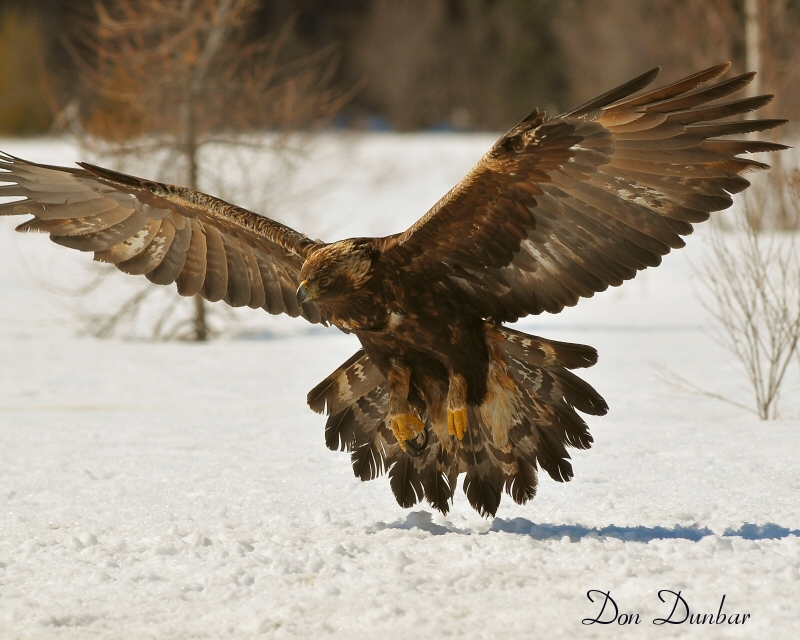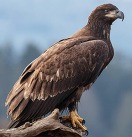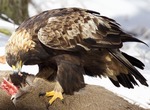Maine Golden Eagle Study
Maine Department of Inland Fisheries and Wildlife in collaboration with the Eastern Golden Eagle Working Group (EGEWG) and Conservation Science Global (CSG) is working to better understand golden eagles in Maine, and we need your help!
 Photo courtesy of Don Dunbar
Documenting golden eagle presence, habitat use, and movements in Maine through community science.
The golden eagle is an Endangered species in Maine and is of concern throughout its eastern range due to its small population size, vulnerability to human-related threats, and considerable gaps in knowledge about habitat use and movement. The Maine Golden Eagle Study aims to address these knowledge gaps to inform management actions by raising awareness of golden eagles in Maine and increasing participation in conservation efforts through community science.
Ways to Participate
The focus of this project is the use of trail cameras to detect the presence of golden eagles, but there are several ways for birders, hunters, landowners, trappers, and wildlife enthusiasts to participate in the study. Choose the option that is the best fit for you!
 |
|
Set up and monitor a baited camera trap.
Baited camera traps are motion-activated trail cameras set up to photograph visitors to a supplied food source. They are an effective way to detect golden eagles that often would not otherwise be observed. Anyone who currently monitors baited camera traps is welcome to join, and those interested in trying it for the first time or collaborating with friends, family, organizations, or school groups are also encouraged to participate!
|
 |
|
Host a camera trap on your land.
A hands-off way for landowners to contribute to this project is to offer access to their land for another participant to bait and monitor a camera trap. This option may also be of interest to land managers interested in supporting community science and learning more about the wildlife on the parcels they manage.
|
 |
|
Supply lead-free bait.
Providing lead-free (animals harvested or dispatched without lead ammunition) bait for a camera trap site is a great way to help volunteers successfully maintain and monitor a location. Bait may include renderings from slaughter and meat processing facilities, roadkill (with appropriate permission/permits), or legally harvested animals.
|
 |
|
Report golden eagle observations.
If getting involved with baited camera traps isn't a good fit for you, you can still contribute to the study by reporting golden eagle sightings. With this option, there is no need to sign up. Simply report the date and location of any golden eagle sightings in Maine through eBird or the MAINE Birds Facebook group.
|
|
 |
|
Spread the word!
One of the best and easiest ways you can help is to spread the word about this exciting community science opportunity! Share a link to the Maine Golden Eagle Study website (mefishwildlife.com/goldeneaglestudy) on your social media pages, and/or download and share the project flier.
|
More Information

Learning to confidently distinguish Maine's two native eagle species, bald eagles, and golden eagles, is an important first step in contributing to eagle conservation as a community scientist. Brush up on your Maine eagle identification skills before you head out into the field.
|
 |
|
All bait used in this study should be lead-free (i.e., not harvested or dispatched with lead ammunition). When eagles accidently eat lead fragments as they consume carrion, the lead is absorbed in their blood, tissue, and bones and can be fatal. Eagles and other avian scavengers are particularly susceptible. Learn more about how choosing non-lead ammunition benefits eagles.
|
|
